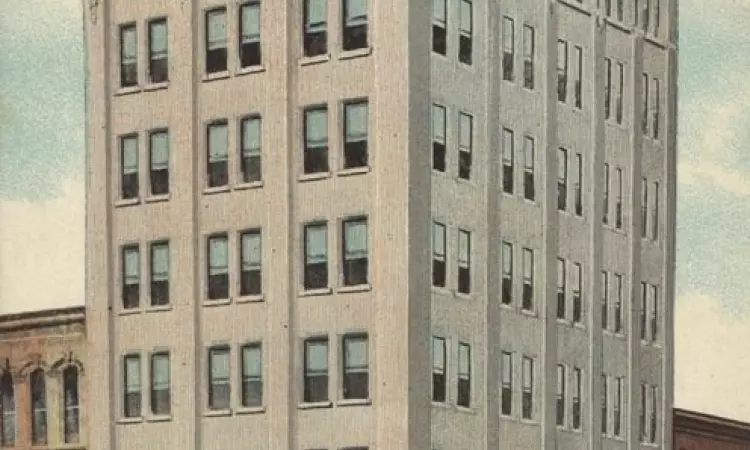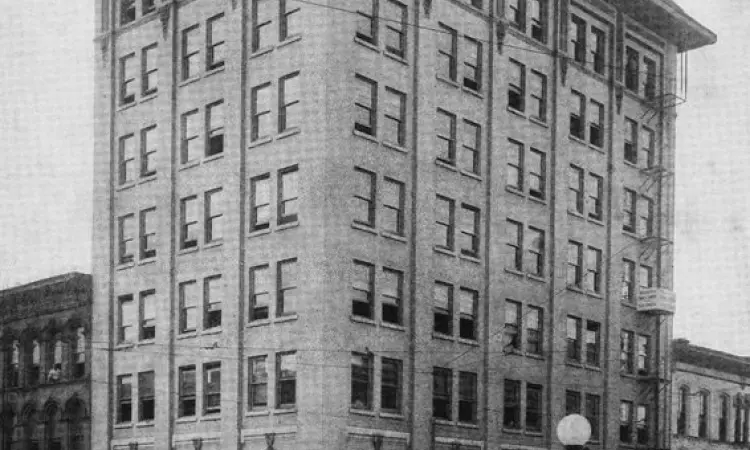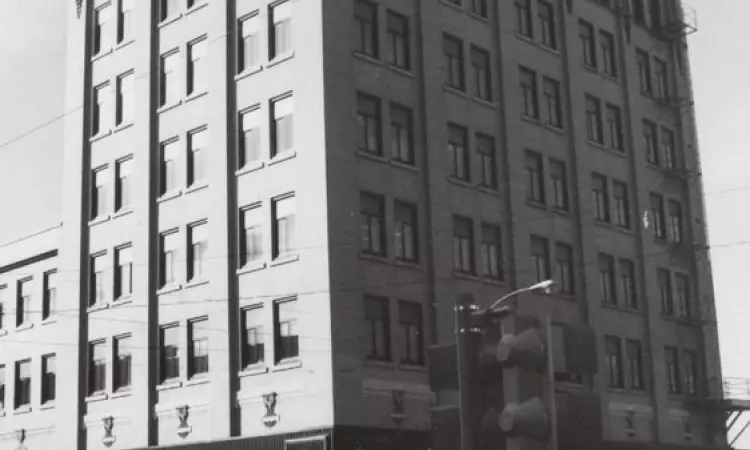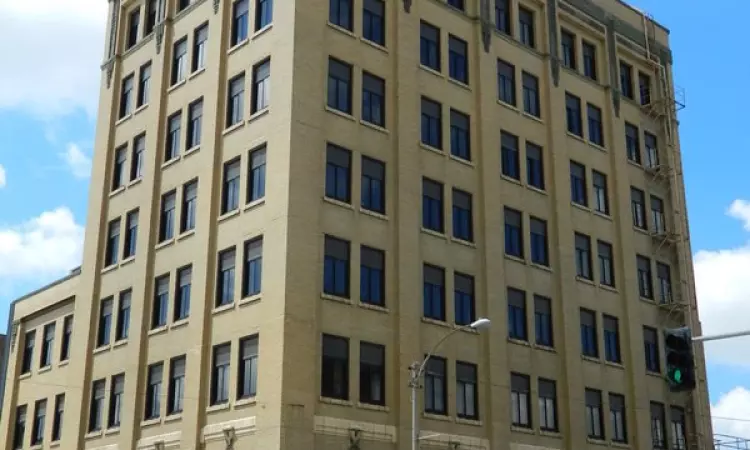People’s Bank Building
Built: 1909
Architect: Arthur L. Pillsbury
Arthur L. Pillsbury
Arthur L. Pillsbury was born in Bloomington on November 29, 1869. He grew up in Bloomington and attended schools in Normal while his father served as principal of the Model School at Illinois State Normal University (today Illinois State University). In 1880, the family moved to Springfield where his father became principal at Springfield High School. Pillsbury completed high school there and began his higher education at Harvard University, graduating in 1892 with a degree in Engineering. Subsequently, he then moved back to Illinois to attend the University of Illinois in Champaign-Urbana for its architecture program, which was the first university in the United States to offer a four-year architectural degree in 1890. He graduated with a degree in architecture in 1895.. After graduation, Pillsbury traveled to Chicago, Toledo, Buffalo, and New York where he worked for a short time and explored the architectural works of these cities. When he moved back to Bloomington in 1898, he was the city’s first university-trained architect. He also became one of Illinois' first licensed architects in 1897, a process established through the University of Illinois architecture program.
In 1898, Pillsbury married Daisy Deane Hill, and they had one daughter, Frances. Throughout his career, Pillsbury designed and renovated approximately 435 homes, 104 schools, 73 businesses, 32 churches, 17 banks, and 16 garages, alongside other architectural projects. Over a dozen new buildings in downtown Bloomington were designed by Pillsbury in the first few years after the Downtown Bloomington Fire of 1900.
In addition to designing notable buildings in Bloomington, he was active in community organizations including the Freemasons, American Institute of Architects, Bloomington Country Club, a member of Second Presbyterian Church, and the University of Illinois Alumni Association. He also donated his time as the McLean County Chairman for the State Council of Defense. With this position, he was responsible for insuring that non-essential construction projects would not draw supplies that would otherwise be used for the war effort during World War I. Tragically, Pillsbury died in a car accident at the age of 55 while returning from a University of Illinois football game. He is buried in Evergreen Memorial Cemetery in Bloomington, IL.
Style: Chicago Tall Building (1800-1920)
Chicago Tall Building (1800-1920)
The result of advances in construction technology which used steel frames to allow buildings to get taller, the Chicago Tall Building style is characterized by the projecting bays, or oriels, that run the length of the building. The commercial style is often marked by a flat roof and a terminating cornice. The façade is organized in horizontal bands and sometimes borrows elements from the Richardsonian Romanesque style with rough stone and recessed openings and from Neo-Classic style using pilasters to create vertical emphasis in the composition
Address: 116-120 N. Center St
Brief History:
1869 – People’s Bank was incorporated on March 4, 1869 and opened in one room on the north side of Washington Street. Shortly after opening, the bank purchased the corner lot from Abram Brokaw and has been there ever since.
1900 — The wooden structure was directly in the path of the great Downtown Bloomington Fire of 1900, but “through diligence of a volunteer bucket brigade, numerous fires were quenched on the roof from flying embers saving the existing building.”
1909 – People’s Bank had outgrown its quarters and expanded to the building you see today
1990s – Commerce Bank merged with People’s Bank, and occupied the building until 2018
2018-2024 - Building vacant
The building will be donated to the City of Bloomington in 2025 for future housing redevelopment.
Architectural Description:
Chicago Tall Building style with American Arts and Crafts decorative motifs with pilasters and recessed windows, stressing the verticality of the building.
Seven-story elevated structure with three distinct divisions, separated by belt courses .
Pedestal-like stone base elevates the building.
First story of the yellow brick stone building encases large windows on both sides of building, bringing light and public interest to the structure.
Second through the sixth floors maintain uniformity in window size and style, reflecting the industrialization movement of the 1900s.
Minimal ornamentation extending to the seventh floor included grape and ivy green terra-cotta detailing.
Building once topped with a cornice like detail that extended beyond the surface of the façade , removed in the 1950s during the City of Bloomington's anti-cornice campaign.
Interesting Facts:
The 'skyscraper' (at least by Bloomington standards) was the talk of the town during its construction — a 'source of wonder and admiration,' it was said. Its height and steel framework drew the most attention. 'The crowds on the streets as they see (the ironworkers) in their dizzy heights are perfectly willing to let them have all the fun they want out of it,' noted a wry Pantagraph reporter on Jan. 19, 1910.
The bank’s interior was as carefully designed as its exterior. The two-story, street-level “banking room” included a clock ornamenting the vault, and above that was a balcony or mezzanine floor with additional office space lined by a wrought iron railing. Some 2,000 safe deposit boxes of various sizes were located in a huge vault in the basement. This vault, by the way, remains in place today.
When the building was completed, Pillsbury moved his architecture business into a seventh floor office in the building.
The building was completed for a cost of $150,000 which would be around $5.1 million in 2024.



